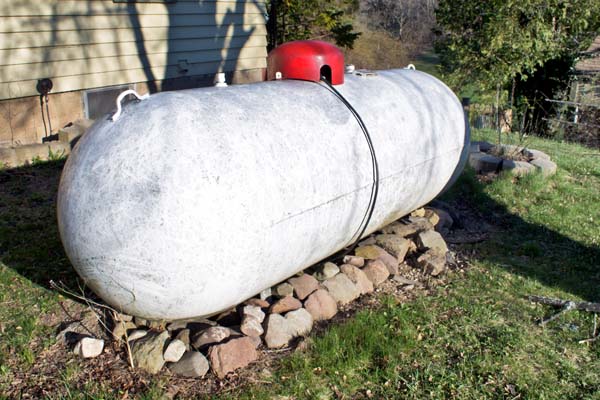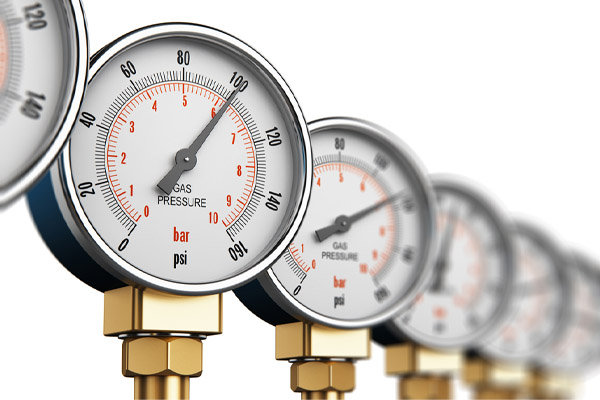Contents
Homeowners want to maximize their propane use. A full tank lets them enjoy continuous heating for a long period. However, after a delivery, taking a quick look at your propane tank’s gauge will tell you that it is never filled to its full capacity. At most, your propane tank levels will be at 80%. You might be wondering why it is like that. The short answer is this is a precautionary measure. The propane delivery company did not make a mistake. They are just compliant with the industry-standard 80% fill rule.
Understanding Your Propane Tank Levels
Read on to find out everything you need to know about the 80% propane tank rule.
Leaving Room For Propane Expansion

Heat causes things to expand. Unfortunately, the thermal expansion rate is different for every substance. For instance, propane has an expansion rate that’s 17 times that of water over the same temperature increase. This doesn’t pose a problem if it’s in an open space, but it could be an issue in an enclosed area. The propane tank has fixed dimensions, and its walls will not budge. Therefore, it is recommended to plan ahead. Leave room for your propane’s expansion when needed so that there will be reduced stress on your tank. This is what the unused 20% capacity in your tank is for.
Propane Tank Location and Its Impact
Where the tank is placed can impact its temperature. For instance, if the tank is located underground, it is insulated from the sun’s heat. Its interior temperatures are likely to maintain its stability so that the same fuel amount can be stretched a bit more than the standard 80% limit. The favorable environmental conditions allow for this reduced buffer, so there is no need to fret. However, an aboveground tank should be shielded from direct sunlight and other sources of heat. Consider consulting your local fuel delivery company regarding additional insulation when needed.
All About Propane Safety

If your tank is filled at full capacity, the propane’s expansion will immediately lead to enormous pressure on the wall of your tank. Its structure might hold if there are only minor temperature increases. However, major temperature swings could result in a dangerous situation. Weak points can burst, and leaks could happen. It is always best to be cautious. All propane delivery service companies know of propane’s drastic volume increase tendency. They will only fill your tank up to 80%, with the remaining 20% capacity acting as a buffer to keep your household safe when using propane heat.
The Importance of the Propane Tank Color
Propane tanks are usually white or another light color. This is not just because of aesthetics, as this lighter hue is based on scientific reasoning. White surfaces reflect light so they can stay cool. On the other hand, black surfaces absorb light, so there is faster heat build-up. The best example of this can be seen in residential roofing. A light-colored roof keeps your home cooler than a dark-hued one. As propane gas is sensitive to heat, the tank must be of a lighter color. Never repaint it using a darker color.
Propane Gauge Fluctuations are Normal
 Check the tank’s gauge throughout the day. You might have noticed that your tank’s readings fluctuate even without using any propane. This repeatedly happens every day. There is no need to worry as your gauge is likely working fine, and the fuel amount hasn’t changed. These small fluctuations are normal and could be caused by temperature changes. A higher reading is likely to happen at noontime than at midnight. The propane expands as it is hotter during midday, and the tank’s gauge catches this movement. The propane should shrink back when the sun has set, and there is a drop in temperature in the area.
Check the tank’s gauge throughout the day. You might have noticed that your tank’s readings fluctuate even without using any propane. This repeatedly happens every day. There is no need to worry as your gauge is likely working fine, and the fuel amount hasn’t changed. These small fluctuations are normal and could be caused by temperature changes. A higher reading is likely to happen at noontime than at midnight. The propane expands as it is hotter during midday, and the tank’s gauge catches this movement. The propane should shrink back when the sun has set, and there is a drop in temperature in the area.
Why Propane Tank Size Is Insignificant
The rule states that a 200-gallon tank should only be filled with up to 160 gallons of propane. The leftover 40 gallons of space will be the buffer for when the propane expands. On the other hand, if you have a bigger tank, it does not necessarily mean you’ll have a smaller buffer percentage. For instance, a 500-gallon tank can only be filled up to 400 gallons of propane. The 100 gallons is for expansion. Filling it up to 90% means it will have 50 gallons of buffer space. This is still a substantial amount but remember that having more means that it will have greater expansion as well. The gap must never be compromised. A propane supplier will follow the 80% fill rule no matter what tank size you have.
Conclusion
Propane delivery is a careful and well-planned process. Trucks arrive when refills are needed so that the customers receive the right amount of propane required to heat their homes. The delivery personnel will check the tank size, determine the limit, and fill up the tank up to a safe level. They will always follow the 80% fill rule. It is a safety measure against propane expansion. This way, homeowners need not worry about any heat-related problems and dangers. For any concerns and questions about the propane tank delivery process, consult your local propane provider.
Get Superior Propane Service By Calling Tevis Energy

When you want reliable propane delivery in central Maryland and southern Pennsylvania, call Tevis Energy. Our fuel delivery services are fast, friendly, and affordable.
You can trust us to give you first-rate service every time. Call us now to learn more about our options in financing and delivery plans.
We also provide a comprehensive suite of HVAC services for enhancing home comfort, indoor air quality levels, and overall efficiency. Our services include HVAC system tune-ups, installations, and repairs among many other things. Call Tevis Energy today!
Call Tevis Energy today to learn more about the products and services our company offers. We provide free, in-home estimates.
You can click here to contact us now or call us at (410) 876-6800 to find out more!